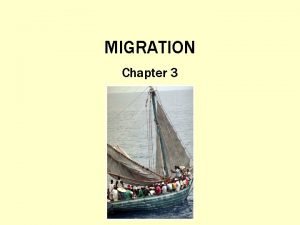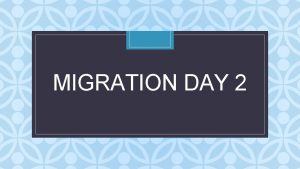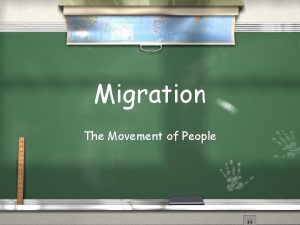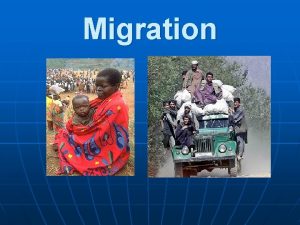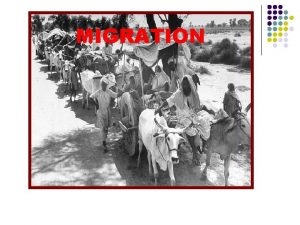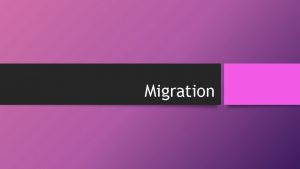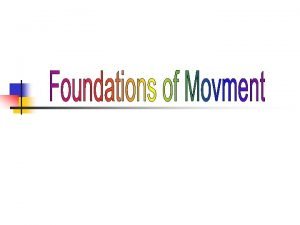MIGRATION WHAT IS MIGRATION It is the movement









- Slides: 9

MIGRATION

WHAT IS MIGRATION? It is the movement of a person or a group of people, to live in another place, often across a political or administrative border. Migration can be temporal or permanent, and it may be voluntary or forced.

IMMIGRATION AND EMIGRATION Immigration (people coming in from elsewhere) and Emigration (people leaving their home country). Immigration is when people move from other places into a place to live. Such migrants are called immigrants. Emigration is when people move out to new places, and the migrants involved are called emigrants. In more recent years, such as the Industrial revolution period, over 50 million people left Europe for the USA, Canada, Argentina, Australia, New Zealand South Africa. Many of them left to escape the poverty and periodic crop failures in Europe.

MIGRATION TODAY The concept is very similar today. In fact, people find it easier to move because of the availability of efficient transport, way-finding technology, improved communications, media, and information, even though new policies, laws and controls in entry points are much more rigorous than ever before.

TYPES OF MIGRATION The various kinds of migration depend on the flow and number of people often involved, the reasons for their movement, the time they spend in migration, and the nature of that migration. Here a few forms: Intercontinental migration, Rural-Urban Migration, Seasonal Migration, Return Migration, Long and short-term migration…

IMPACT OF MIGRATION ON DESTINATION COUNTRY Migration has both positive and negative impacts on the destination country. ADVANTAGES o Cheap Labour: Migrants often do many unqualified jobs for a very little wage. o Skilled Labour: Some immigrants are highly experienced and talented, and they contribute to knowledge and production for the prosperity of all in that country. o Cultural Diversity: Immigrants provide the diversity in many places. Diversity helps cultures and traditions to loosen the grip on racism, discrimination and things like that. Diversity helps people learn about other ways of life and what goes on in other places of the world. DISADVANTAGES o Job loss: Immigrants may also cause stress on job arguments as the locals often lose jobs to incoming workers. o Discrimination/racism: Immigration can incite racism and discrimination. o Social/Civil Pressure: Housing, health, education and many other facilities may be affected from the pressure of excessive use by more people than it was designed to take. This can force prices.

WHAT IS ILLEGAL MIGRATION? Every nation, country or colony often has rules and laws that control and regulate people who come in from other places. Migration becomes illegal if people do not have the permission of the country or borders they are entering into.

INTERESTING MIGRATION FACTS Migrant destinations In 2013, about half of international migrants lived in these ten countries: USA (45. 8 million), Russian Federation (11 million), Germany (9. 8 million), Saudi Arabia (9. 1 million), United Arab Emirates (7. 8 million), United Kingdom (7. 8 million), France (7. 4 million), Canada (7. 3 million), Australia (6. 5 million), and Spain (6. 5 million).

THE END By Laura Miranda, Alba Romero, Laura Bolívar and Paula Titos

